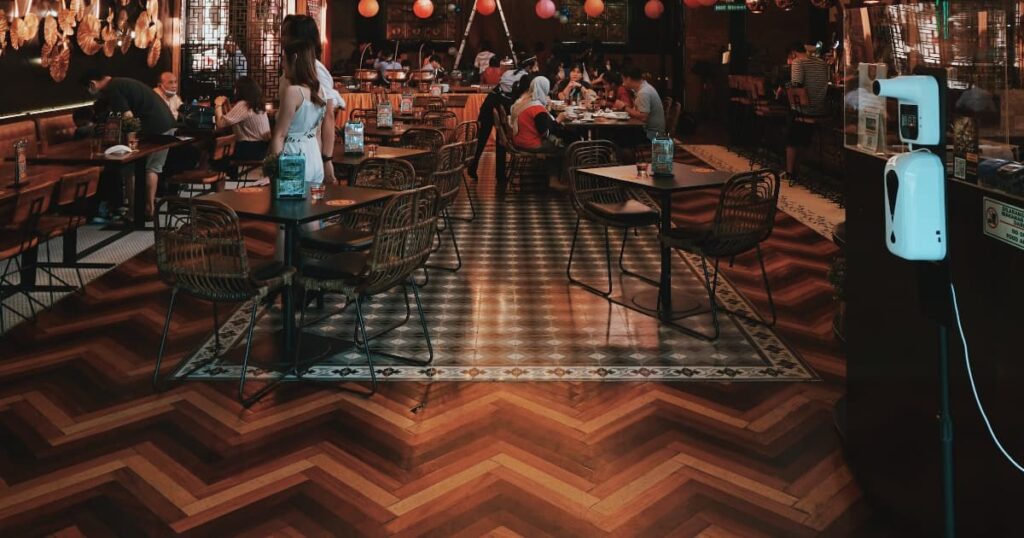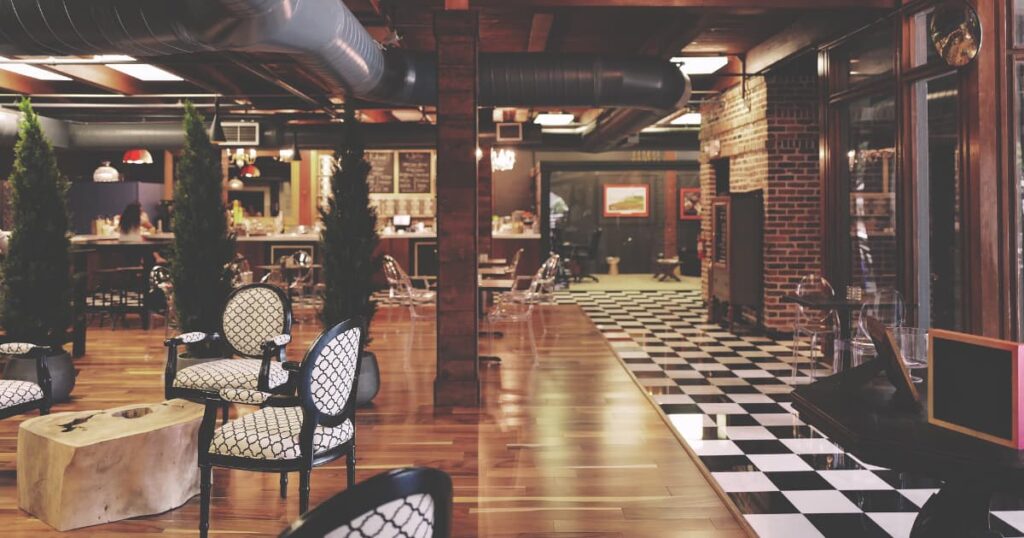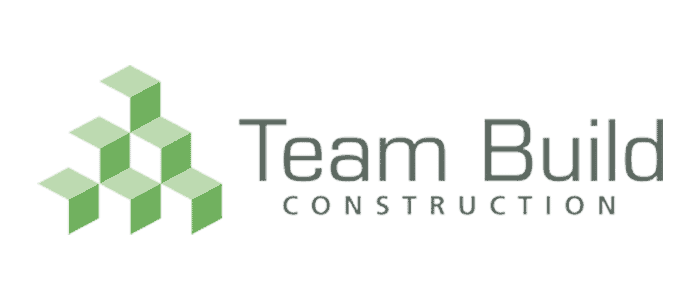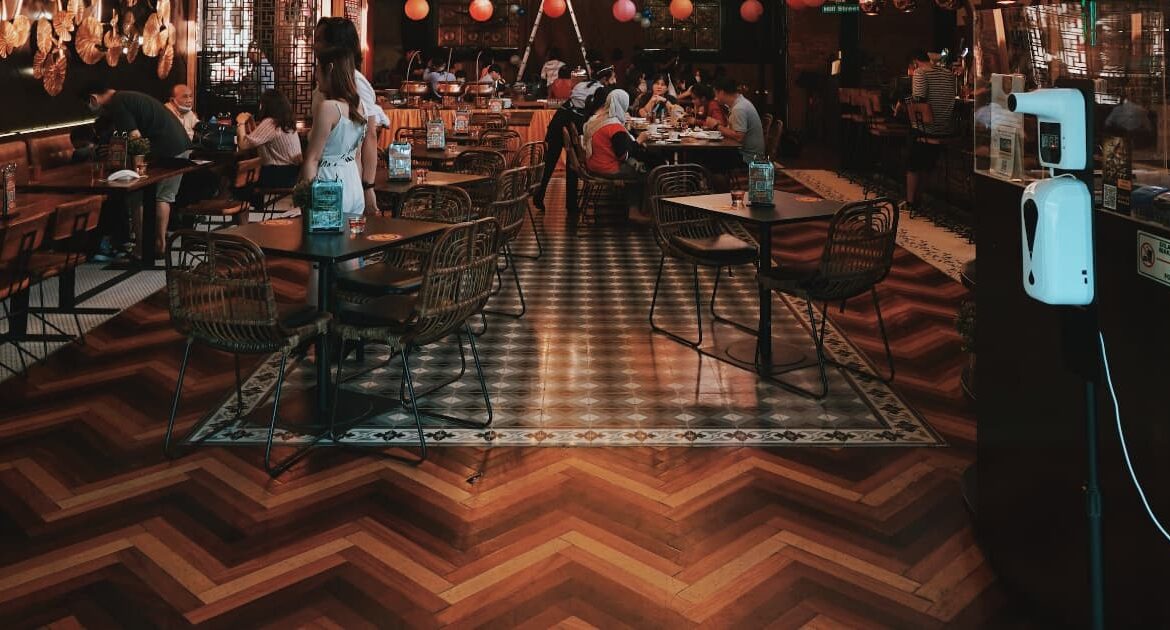
Hardwood flooring, whether in a private space or a commercial venue, is largely considered to be a timelessly stylish and high value choice – elevating the appearance of the room it is in and creating an elegant yet rustic finish which adds character to the space.
And in the case of hospitality venues and restaurants in particular, the benefits don’t stop there.
A hardwood floor offers a versatile foundation for your restaurant design and theming, suitable for integration into a traditionally formal setting, a modern vibe, or something a little more unique. In addition, hardwood floors are very easy to clean and maintain, and offer a durable and hard-wearing base which can accommodate the high footfall of a restaurant with ease.
So, what’s the point of this blog post? In the following sections, we’re focussing on the things you need to consider when selecting the best hardwood floor for your restaurant – looking at care and maintenance, the best flooring types for different areas of your restaurant, and details such as the colour and grain of your hardwood.
Is hardwood the best flooring for your restaurant?
When selecting the best flooring type for your restaurant which ticks both the boxes of practicality and style with ease, prioritising both and leaving you with a floor which is hard wearing and easy to clean but which also suits the look and overall vibe of your restaurant.
Hardwood is, first and foremost, able to withstand wear and tear – with engineered hardwood the strongest and most durable option in the face of high footfall. This, combined with the versatility of engineered hardwood and the fact it offers the same aesthetic finish without the same exposure to scratches and marks, means that engineered hardwood is the best option for a restaurant.
With that said, how do you care for and ensure the quality of your hardwood remains the same even with weeks and months of high footfall and use?
Caring for your hardwood floor
One of the biggest considerations for a restaurant owner and designer must be maintenance and how to ensure that the floor can be cleaned quickly and effectively at the end of service, restoring it to its former glory every single day.
To maintain both the strength and aesthetic presentation of your hardwood floor across the restaurant space, you need to make sure that the regular sweep, vacuum, and clean is supplemented with frequent treatment in the form of a lacquer or oil-based finishing product. These substances serve to seal the woods surface, preventing scratches and the signs of wear and tear, and ensuring it continues to exude a glossy and manicured finish.
Is hardwood the best flooring type throughout the entire restaurant?

The answer to this is no, with the kitchen of your restaurant faring better with a functional and practical laminate or vinyl flooring. While engineered hardwood is generally durable in the face of scratches, marks, wear and tear, spillages, and high moisture environments, vinyl or laminate tend to be the best options for a durable and slip-proof surface that benefits your team.
Best of all, with the kitchen concealed behind closed doors, it won’t impact the overall aesthetic of the restaurant itself – meaning you can mix and match your restaurant hardwood floor with a more practical option for the commercial kitchen space.
Installation
Another thing you need to consider when selecting a hardwood floor for your restaurant is the ease of installation, and how you can ensure a perfect finish across the space – regardless of its shape and complexity. Health and safety should be a priority when selecting the best floor for your restaurant, with installation directing the means through which the floor is held in place as well as impacting its trip and slip resistance.
Most businesses opt for nails to secure their hardwood floor, paying close attention to ensure that the nail tops are flush with the surface. The right hardwood surface should also offer traction to the feet to minimise slips and should sit perfectly aligned across the entire floor – no variation in the thickness of the wooden boards.
The design of your hardwood floor
Finally, to the design and aesthetic of your hardwood floor. This is where you get to decide on the colour tone of your hardwood floor, the clarity of the wood grains, and the richness of the woods natural patterning. This will be dictated by the kind of environment that you are looking to create, with both new hardwood solutions and reclaimed wood presenting their own benefits that our team can help you to identify and chosen between.

